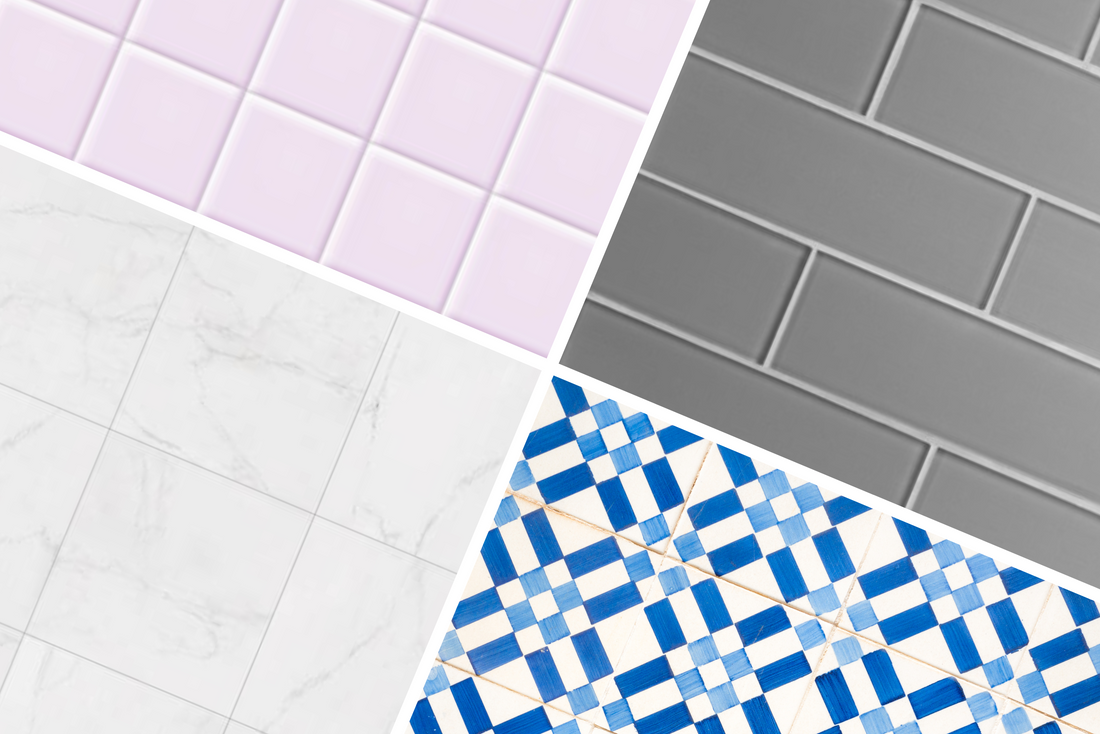Types of Tiles and Tile Finishes
Cleaning tiles seems straight forward, but there are things you to check.
Boring right? But it matters... really it matters!
Tiles can be porous, sealed, glazed and made from ceramic, stone or porcelain amongst other materials. Below are some of the most common tile type.
Important: Using the wrong product when cleaning tiles can be a costly mistake, so it is important to know what type of tile you have before cleaning.
Know what type of tile you have? Are they porous or matte and you want to know how to clean them? Click here.
Ceramic Tiles

Due to their affordability, durability, and resistance to stains and odours, ceramic tiles have become one of the most common types of tile found in homes today.
The durability of ceramic tiles means they are suitable for high traffic areas throughout the home including bathrooms, kitchens, laundry rooms and entry-ways.
Ceramic tiles can be glazed or unglazed (most commonly glazed). Glazing seals them with a liquid glass coating. This gives ceramic tiles their resistance to stains and fading. If left unglazed, they may require other form of sealing or coating.
Porcelain Tiles

Porcelain tiles are very similar to ceramic in many ways, but there are some definite differences between the two…
Like ceramic, porcelain is durable, scratch resistant, and less prone to stains. Porcelain however, is made with a denser clay than ceramic, making it even more resistant to damage. With this added durability porcelain (unlike ceramic) is able to be used outdoors as well and indoors. This makes porcelain suitable for a wider range of projects.
Porcelain tiles are also often used to emulate natural stone, brick or wood.
Stone Tiles

Stone tiles are known for their classic beauty and durability. Stone tiles come in many forms such as granite, marble, limestone, travertine, quartzite and sandstone.
Stone tiles are very porous materials and it is recommended that if stone tiles are to be used inside the home that they are sealed.
The process of sealing requires a sealant to be applied directly to the tile. This makes the tile less porous which increases its’ resistance to staining, dirt and general wear. This also means the tile will be easier to clean and will generally last longer.
Glass Tiles

Glass Tiles are very stain resistant which makes them a popular option for splashbacks, table tops and feature walls. One potential downside to glass tiles is that they are much more likely to chip and/or crack, this means they are not recommended for high traffic areas like bathroom or kitchen floors.
Matte Finish Tiles

Matte finish tiles are a popular option for tiles in homes, they are suitable for both interior wall and flooring applications. This type of finish can be applied to different types of tiles (porcelain, ceramic etc), they appear dull and reflect little light. Matte tiles are effective in concealing stains, smudges and the like. However, they can be difficult to clean.
Porous/Non-Porous Tiles

A non-porous floor does not absorb soils or moisture. Examples of this include glazed ceramic or glazed porcelain tiles. Moisture tends to sink into the surface of porous tiles if unglazed or unsealed. Examples are concrete, unsealed stone and brick. This picture shows a tile before and after the sealing process.
To identify if you have porous tiles or stone, drop a small amount of water on the surface. If it is porous, water marks and darkening are visible after the floor is wet, leaving areas patchy and discoloured until they dry out.
Coloured/Non-Coloured Grout

Grout is used as a filler for the joints between tiles once the tile you are installing has been set. Grout (like tiles) can come in a variety of colours to match or contrast the tiles.
Know what type of tile you have and whether it's porous or matte and want to know how to clean it? Click here.
Thanks to...
https://www.realsimple.com/home-organizing/decorating/types-of-tiles
https://www.mymove.com/home-inspiration/flooring/types-of-floor-tile/
https://goodguyflooring.com/blogs/home-improvement-blog/porcelain-ceramic-stone-tile-types-and-best-uses
https://www.flooringstores.com/blog/types-of-tile/
https://www.homestratosphere.com/types-of-tiles-for-flooring/

